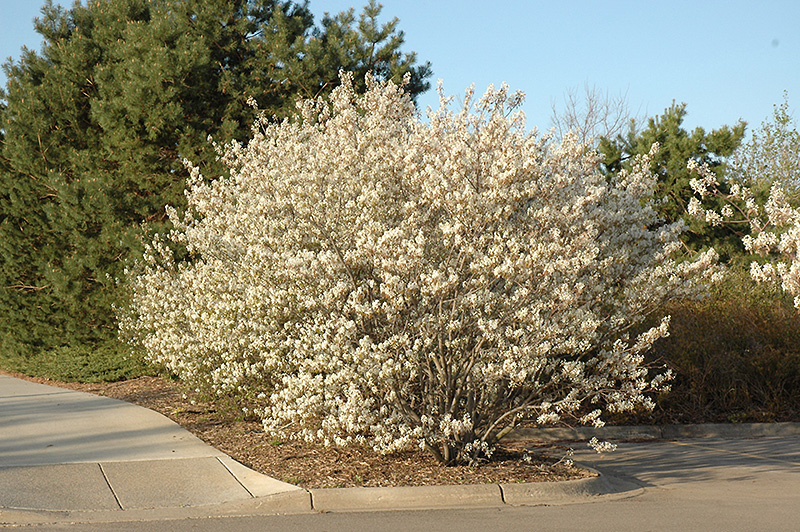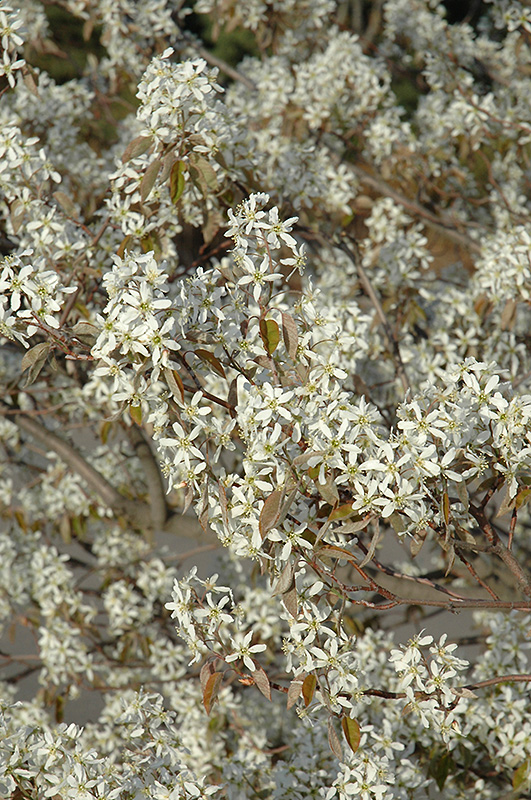Plant Search
Shadblow Serviceberry
Amelanchier canadensis
Height: 15 feet
Spread: 15 feet
Sunlight:
![]()
![]()
Hardiness Zone: 3b
Other Names: Shadblow
Description:
A naturally beautiful small tree, ideal for small home landscapes; masses of showy white flowers in spring, edible berries in June, and amazing fall color add up to a versatile landscape plant
Growing Place Choice Plants
Our Growing Place Choice plants are chosen because they are strong performers year after year, staying attractive with less maintenance when planted in the right place.
Learn more about this promotion!
Ornamental Features
Shadblow Serviceberry is smothered in stunning clusters of white flowers rising above the foliage in early spring before the leaves. It has green deciduous foliage. The oval leaves turn an outstanding orange in the fall. It produces black berries in late spring.
This plant is primarily grown as an ornamental, but it's also valued for its edible qualities. The round tart berries are most often used in the following ways:
- Cooking
- Preserves
Landscape Attributes
Shadblow Serviceberry is a multi-stemmed deciduous shrub with an upright spreading habit of growth. Its average texture blends into the landscape, but can be balanced by one or two finer or coarser trees or shrubs for an effective composition.
This shrub will require occasional maintenance and upkeep, and is best pruned in late winter once the threat of extreme cold has passed. It is a good choice for attracting birds to your yard, but is not particularly attractive to deer who tend to leave it alone in favor of tastier treats. Gardeners should be aware of the following characteristic(s) that may warrant special consideration;
- Suckering
Shadblow Serviceberry is recommended for the following landscape applications;
- Accent
- Mass Planting
- Hedges/Screening
- General Garden Use
- Naturalizing And Woodland Gardens
Planting & Growing
Shadblow Serviceberry will grow to be about 15 feet tall at maturity, with a spread of 15 feet. It tends to be a little leggy, with a typical clearance of 4 feet from the ground, and is suitable for planting under power lines. It grows at a medium rate, and under ideal conditions can be expected to live for 40 years or more. While it is considered to be somewhat self-pollinating, it tends to set heavier quantities of fruit with a different variety of the same species growing nearby.
This shrub does best in full sun to partial shade. It is quite adaptable, prefering to grow in average to wet conditions, and will even tolerate some standing water. It is not particular as to soil type or pH. It is somewhat tolerant of urban pollution. This species is native to parts of North America.
A NetPS Plant Finder tool




